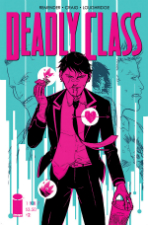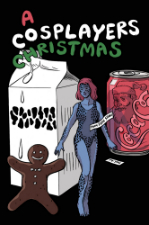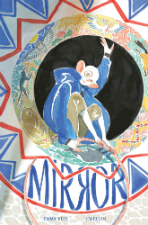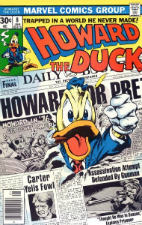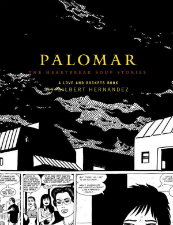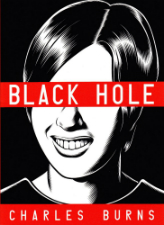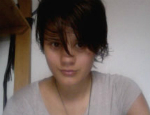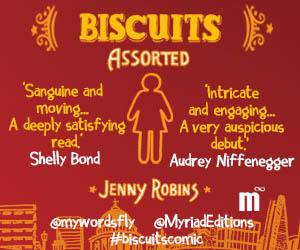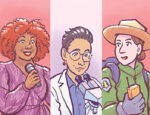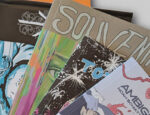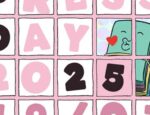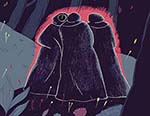It’s a new era at Broken Frontier and to usher in the next stage in BF’s evolution we’ve been building an expanded writing team to broaden our scope and approach to our coverage. Every Thursday we’ll be introducing you to a member of our committed crew of comics commentators with a view to connecting you to the names behind the bylines.
This week we begin our ‘Meet the Broken Frontier Team’ features with our first chat with Contributing Writer Paul Mirek…
Introduce yourself to our audience in 50 concise words or less…
I am a professional content strategist and copywriter who is in love with storytelling of all kinds and believes that art can be a powerful force for positive change. I live in North Carolina with my wife Kristen and a menagerie of parakeets, a dog, and several fishes.
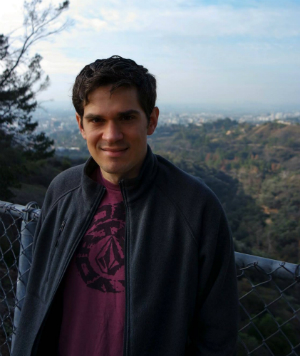 How, when and why did you become a part of the Broken Frontier team?
How, when and why did you become a part of the Broken Frontier team?
I got seriously into comics in the mid-00s a time when the medium was first becoming a viable topic for mainstream reporting. I was and still am a firm believer in the idea that one can appreciate both superhero comics and the vaguely defined “alternative” side of the industry for their own merits, but there was an undeniable emphasis on one genre over the other in most outlets.
While you could read about the latest Batman mega-arc or the umpteenth death of Spider-Man in any major newspaper, it was difficult to find any news about comics that dealt with the devastatingly funny, deeply personal subject matter that I sought out in other media – the novels of Philip Roth and Thomas Pynchon and the films of the Coen Brothers and Martin Scorsese.
During a winter term course at school I was assigned An Anthology of Graphic Fiction, Cartoons, and True Stories from Yale University Press, which became my bible for the next few years and introduced me to artists like Gary Panter, Los Bros Hernandez, and Charles Burns. I also recognized that I was coming to these artists more than 20 years after they started publishing (like your friend who suddenly gets really into Led Zeppelin), which made me even more determined to seek out current creators in a similar vein. A few years ago I decided to get serious about this endeavor and started a few short-lived blogs to talk about the work that most excited me.
At the end of 2014, I stumbled across a Broken Frontier tweet calling for contributing writers to join the team. After diving into the archives I realized that here was a group doing exactly what I was trying to do – smart and critical assessments of independent artists without the affected (and frankly alienating) scholarly tone that plagues some similar outlets. I reached out to Frederik [Hautain – BF’s founder] to introduce myself and the rest, as they say, is history.
Tell us about your role at BF? What are your areas of coverage?
As a Contributing Writer at Broken Frontier, I’ve had the opportunity to dig into the stories that inspire me without regard for a consistent “beat” – interviews with the creators of the She Makes Comics documentary (trailer above) and the organizers of an exhibition on Arab comics, reviews of work from underground Serbian artist Serbian artist Mladen Oljača and acclaimed political cartoonist Peter Kuper, and more. In general I’m drawn to artists who aren’t afraid to offend, either with the blunt honesty of their message or their disregard for formal constraints. I also have a soft spot for work inspired by the punk rock spirit and aesthetic as seen in the works of publishers like Retrofit, Floating World Comics, and Nix Comics.
What’s your very first memory of comics?
My first comics memory is of leafing through the newspaper funny pages at the breakfast table to see what Garfield had gotten himself into this time. However, my first significant introduction to the medium came when I received a limited-edition Dark Phoenix Saga set that included a trade paperback of that story and (for some reason) a set of Starjammers action figures. I was a fan of the X-Men animated series at the time, but I was by no means prepared for the Wagnerian soap opera pyrokinetics of Claremont and Byrne’s epic. I loved it for the reasons most young readers probably did—Wolverine’s commando raid through the sewers of the Hellfire Club, the forbidden allure of Emma Frost—but also for the sense that I was getting a glimpse of a world with decades of (real and imagined) history. This volume is likely also responsible for my lifelong love of “As seen in issue…” editor’s notes in superhero comics.
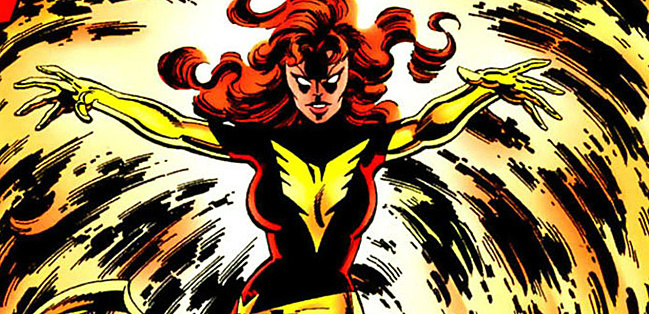
What is it about comics as a storytelling medium that you are most passionate about?
As someone who has chosen communication as his passion and profession, I’m of course interested in the ways comics can uniquely convey ideas. On a surface level, you only need to compare a war correspondent’s feature in the New York Times with one of Joe Sacco’s books to see that each are tackling the same challenge in very different ways. But on a deeper note, I believe the language of comics has few direct parallels and can confront our basic ways of understanding the world in truly groundbreaking ways—just look at the work of Chris Ware for one of the clearest examples.
On the other hand, I’m also very inspired by the potential of comics as a so-called “popular” medium for memoir, journalism, poetry, and more. It seems to me that based on their (relative) ease of distribution and consumption compared with other formats, comics offer unique opportunities to those voices that have been disenfranchised or marginalized. I’d love to see more cartooning options being offered alongside creative writing classes to show people just how easy it is to create a comic of their own, especially given the potential therapeutic benefits of the actual act of comic creation (which Broken Frontier has done an excellent job covering as part of its “graphic medicine” spotlight).
Name three current favourite (plus three all-time favourite) graphic novels or comics…
Current
Deadly Class: Rick Remender and Wes Criag’s punk rock high school epic has ripped my heart out more times than I can count—and is one of the few books on the stands that’s not afraid to rip it all up and start again.
Cosplayers: Dash Shaw’s ongoing series of one-shots evokes Dan Clowes and early Wes Anderson in its disarmingly earnest portrayal of Annie and Verti, two passionate young women who find kinship and possibility in their shared fandom. Pick up Fantagraphics’ collection of the original series and the latest Christmas Special.
Mirror: This lush sci-fi fantasy from Emma Ríos and Hwei Lim is completely entrancing and profoundly humanistic. A series that invites you to linger on every page and is kicking off with a new arc in March.
All-Time
Howard the Duck: Steve Gerber’s masterpiece is both everything and nothing like you’d expect from a book starring a misanthropic talking duck. Gerber (with artists Mayerik, Brunner, and Colan) peoples the book with a core cast of characters as compelling as any in pop culture memory, then pits them against a parade of some of the most demented adversaries Marvel’s ever been tricked into publishing. The book swings wildly between manic and depressive extremes, particularly near the gut-wrenching close of Gerber’s run, but always feels consistent throughout and offers new pleasures with each rereading.
Palomar: The Heartbreak Soup Stories: What new praise can I heap on these books? I first experienced these stories in the (now out-of-print) 500-page hardcover collecting the first 13 years of Gilbert’s Love and Rockets run, but their power would be the same in any format. This is what we talk about when we talk about world-building—a universe in which even the most seemingly minor characters can have momentous results on our supposed protagonists. The stories are richly feminist and infused with a deeply mythic grandeur that’s only heightened by Gilbert’s love of pratfalls and sight gags.
Black Hole: While I was first starting to look beyond the world of capes and tights, I came across this title on display at one of the big-brand chain bookstores near my house. The leering cover caught my attention on the spot, but I quickly discovered that nothing in my previous reading experience had prepared me for the contents within. Burns’ vision of high school is one of horror, alienation, and unexpected beauty – in other words, almost identical to the real thing.
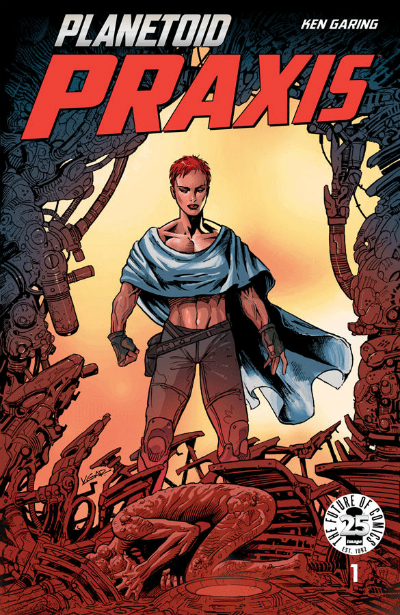
Are you involved in comics or any other artistic practice outside of your Broken Frontier work?
I still tend toward the written word in my solo creative endeavors, which I’m trying to devote more time to in 2017. I wrote a collection of poetry as part of my Senior Honors Thesis in college and continue to work on poetry and short fiction in my free time.
And, finally, give us one creator or project you think we should be looking out for in 2017 and tell us why?
The book I’m most excited for in 2017 is Alack Sinner: The Age of Innocence, the first English-language translation of the hard-boiled masterpiece from Argentine creators José Muñoz and writer Carlos Sampayo. Since that may be a slight cheat, though, I’m also excited for the return of Ken Garing’s Planetoid at Image this February. The original 2012 miniseries was a grand sci-fi adventure with notes of Eurocomics and manga, and I’m excited to see how Garing has honed his craft in the last five years.
You can check out Paul’s past work at Broken Frontier here and follow him on Twitter here.





